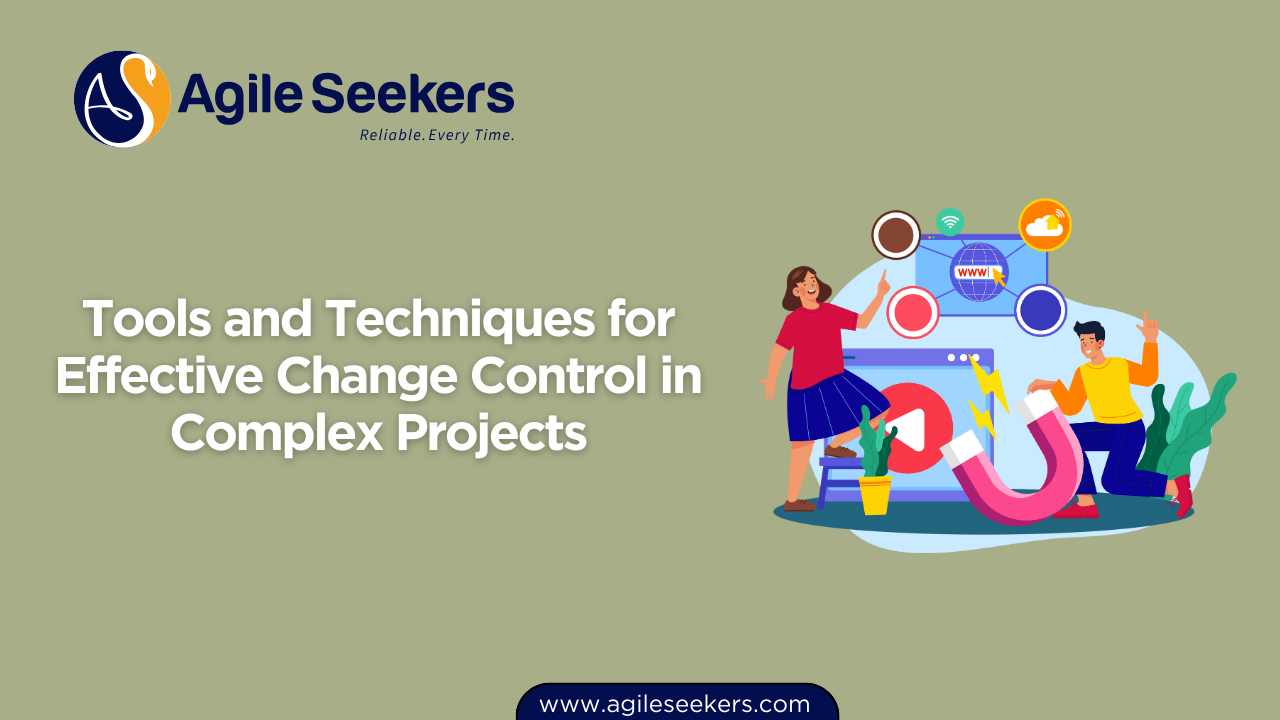Tools and Techniques for Effective Change Control in Complex Projects

Change is unavoidable in complex projects. Whether it’s a shift in client needs, regulatory changes, market movements, or internal process adjustments, project managers must have strong change control mechanisms to keep things on track. Without a clear process, projects risk falling into chaos, missing deadlines, or exceeding budgets.
This post explores essential tools and techniques for managing change effectively in complex environments — while showing how structured project management approaches, like those taught in PMP Certification, help project managers navigate change with confidence.
What Is Change Control?
Change control is the systematic approach for handling alterations to project scope, deliverables, timelines, or resources. In small projects, minor adjustments might pass informally. But in large, complex projects with many moving parts, informal handling leads to miscommunication, scope creep, and delays.
A solid change control process ensures:
-
All proposed changes are documented and evaluated.
-
Stakeholders understand potential impacts.
-
Approvals are given systematically before implementation.
Without this structure, even small changes can cascade into major disruptions.
Tools for Effective Change Control
Let’s explore the most valuable tools project managers use to manage change.
1️⃣ Integrated Change Control System (ICCS)
An ICCS is the central hub where all change requests are logged, tracked, and reviewed. Many teams use project management software like Jira, MS Project, or Primavera to manage this process.
Benefits include:
-
Centralized visibility of change requests.
-
Historical records for accountability.
-
Easier tracking of approval decisions and outcomes.
It’s crucial that the team consistently uses the system — no side agreements or undocumented approvals.
2️⃣ Change Control Board (CCB)
A Change Control Board is a formal group made up of stakeholders, project sponsors, technical leads, and sometimes client representatives.
Their responsibilities:
-
Review and prioritize requests.
-
Weigh benefits against risks, costs, and constraints.
-
Approve or reject changes systematically.
In complex projects, a well-run CCB helps prevent bottlenecks and keeps change approval structured and fair.
3️⃣ Change Request Forms (CRFs)
The CRF ensures every change request captures essential details:
-
What change is being proposed.
-
Why it’s needed.
-
What areas it will affect (cost, scope, time, quality, risk).
-
How it will be implemented if approved.
A standardized CRF minimizes misunderstandings and provides decision-makers with all the necessary information upfront.
4️⃣ Impact Analysis Tools
Before approving a change, the project team must understand its full implications. Tools often used include:
-
Work Breakdown Structures (WBS) to identify affected deliverables.
-
Dependency maps to trace upstream and downstream effects.
-
Risk registers to capture new or elevated risks.
This structured analysis helps prevent surprises after implementation.
5️⃣ Version Control and Configuration Management
For projects involving software, technical systems, or complex documentation, configuration management tools like Git or Subversion track version changes and maintain traceability.
This avoids errors from accidental overwrites or working on outdated versions — an essential control in large-scale or high-stakes projects.
Techniques for Strong Change Management
Alongside tools, project managers apply several key techniques.
✔ Define a Clear Change Management Plan
A change management plan outlines how changes will be handled:
-
Who can submit requests.
-
How requests will be analyzed.
-
Who has authority to approve.
-
How updates will be communicated.
Professionals who complete pmp certification training learn how to develop and enforce these governance practices, which are especially vital in large, complex projects.
✔ Communicate Transparently
Stakeholders should understand the change control process from the start. Regular communication — through reports, meetings, or dashboards — keeps everyone aligned. This prevents surprises, builds trust, and helps secure buy-in when formal approvals are needed.
✔ Document Thoroughly
Every change request, analysis, decision, and update should be logged. Strong documentation improves accountability and serves as a knowledge base for future projects. It also protects teams when stakeholders challenge decisions later.
✔ Apply Rolling Wave Planning
In fast-evolving projects, rolling wave planning — detailing near-term work while keeping long-term phases flexible — allows for adjustments without triggering formal change requests at every turn.
✔ Monitor with Earned Value Management (EVM)
Using EVM, project managers track performance against scope, schedule, and cost baselines. This gives early warning when changes push projects off track, supporting better, data-informed decisions.
For deeper insights, check out this PMI guide on Earned Value Management.
Example: Change Control in Construction Projects
Imagine a large construction project where local government regulations change midway. The project team must:
-
Submit a formal change request detailing what’s affected.
-
Conduct an impact analysis on designs, materials, and timelines.
-
Review with the CCB to approve the change.
-
Update project plans, budgets, and contracts.
-
Communicate updates to all stakeholders.
Without structured change control, such updates can lead to costly mistakes or legal noncompliance.
Why Project Management Knowledge Matters
Handling change effectively is a core competency in modern project management. The Project Management Professional certification teaches professionals to apply industry-standard frameworks and tools, improving their ability to guide projects through uncertainty.
Teams that invest in pmp training are better equipped to:
-
Evaluate change impacts.
-
Make data-driven decisions.
-
Navigate approvals smoothly.
-
Align stakeholders and manage risks proactively.
Final Thoughts
Managing change in complex projects isn’t about resisting it; it’s about handling it wisely. By using tools like ICCS, CRFs, and impact analysis, and applying techniques such as clear planning, transparent communication, and detailed documentation, project managers ensure changes enhance, not disrupt, their projects.
If you want to strengthen your change control skills, explore the structured training offered through PMP Certification — it equips you with proven methods to manage complex projects confidently.
For more on advanced change management, you can also explore this Harvard Business Review article on managing complex change.
Also read - Applying the Theory of Constraints in PMP Project Scheduling
Also check - Data-Driven Decision Making: Using Project Data to Improve Performance




















